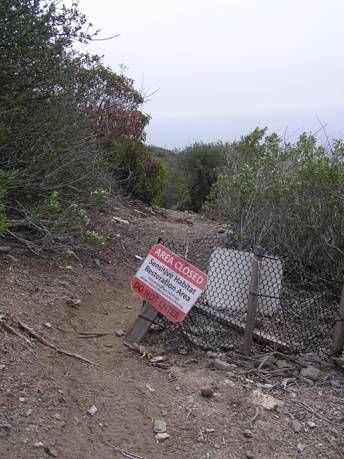 Fitness, research, stress release, friendship, solitude, training, beauty.
Fitness, research, stress release, friendship, solitude, training, beauty.
There are countless reasons to get outdoors. With more than 133,000 collective acres of wildlands in Orange County—the parks, scenery and experiences are plentiful. However, complaints are increasing from park users as they find that more of those experiences are negative and some are downright scary.
In certain areas, getting out into nature has become more of a "proceed at your own risk" experience than one to recharge the spiritual batteries or get in some good exercise.
More people brings more concerns
With just over 3 million residents in Orange County right now and with projections to climb to 3.6 million by 2035, there will continue to be high demands on all of our community assets. From roads to schools, from libraries to community centers—the more people there are, the more demand there is.
Join us for a Trails Workshop on Sept. 26 to learn more and play your part in saving Orange County's trails. The workshop is open to the public, and costs $15 per person. Register here and sign up early as space is limited.
The same equation is true for our parks… there will certainly be more trail users. As park advocates, the Sierra Club wants people to experience nature, but what is being witnessed right now in these natural lands calls for serious and collaborative work toward a sustainable future.
Park personnel have reported numerous incidents that have hit a new high in terms of public safety concerns. For example, Santiago Oaks Regional Park in Orange reports that an archery range was found, evidenced by arrows in the trees.
Imagine turning a sharp corner on your morning outing only to see someone aiming a bow and arrow shooting across the trail you are on. Not only is this a public safety hazard, but it is also an unauthorized use of public parkland. In other words, there are certain things you can do in the parks and certain things you can’t do. Setting up your own personal archery range is on the "can’t do" list.
Trail cutters create habitat problems
In other instances, some park visitors are bypassing the existing trail systems and creating their own unauthorized trails with their own gardening tools in hand—ranging from machetes and lopping shears to chainsaws. Then unknowing trail users that follow are perpetuating the use of these illegal trails. One land manager reported that five new trails sprung up in one week’s time in Bommer Canyon in Irvine.
At this rate some parks that we now know and love will become hills and canyons covered in annual grasses instead of native wildflowers and host limited wildlife because of the lack of respect by a select few and the continued exacerbation of the problem by the unknowing many. We are loving these parks to death and need to find a balance between resource protection and recreation.
Concerned by the lack of balance, a number of environmental groups -- Audubon California, Sea and Sage Audubon, Sierra Club, Friends of Harbors, Beaches and Parks, and Laguna Canyon Foundation -- founded the Safe Trails Coalition. This coalition supports all trail users who use the existing network of authorized trails, are willing to ensure native plants and wildlife and other natural resources are protected, and agree that all trail users and park visitors are entitled to a safe and enjoyable experience in the wilderness.
With nearly 30 supporting organizations involved, the coalition has created collective objectives are to reduce the illegal trail use/creation, address the imminent safety concerns, and protect the natural resources through two avenues: education and enforcement. The coalition has focused its efforts on a multi-pronged approach with multiple solutions. It recognizes the need for, and fully support, appropriate recreation, but it also recognizes the need to ensure the reasons the land was protected remain intact.
The need for a coalition of environmental groups
There is a lot to be said for the John Muirs of Orange County that early on helped to save these scenic lands from development, roads and more urban uses. Without the time, selflessness, and engagement of these park creators, many of the county's special places would be covered with houses and without a single trail. Just like when you buy a house with CC&Rs that inform you of the restrictions in your community, the same applies to our parklands. In some instances, the lands have specific restrictions that prohibit certain activities or require certain protections for a variety of reasons: landowner’s wishes, funding restrictions or management requirements. Land managers have an obligation to ensure those restrictions are met and park users have an obligation to respect them.
The coalition’s first solutions-oriented event will provide park activists, user groups, land managers and public with an opportunity explore individual and shared trail and park concerns, determine common ground, and discuss potential solutions or approaches to remedy those concerns. The outcome of this workshop will lead to a fact sheet that will guide the coalition in its next steps.
Melanie Schlotterbeck is a Sierra Club member and conservation advocate.
Photo: Trail users ignore signs to steer clear of sensitive habitat in an Orange County park. Credit: Penny Ella